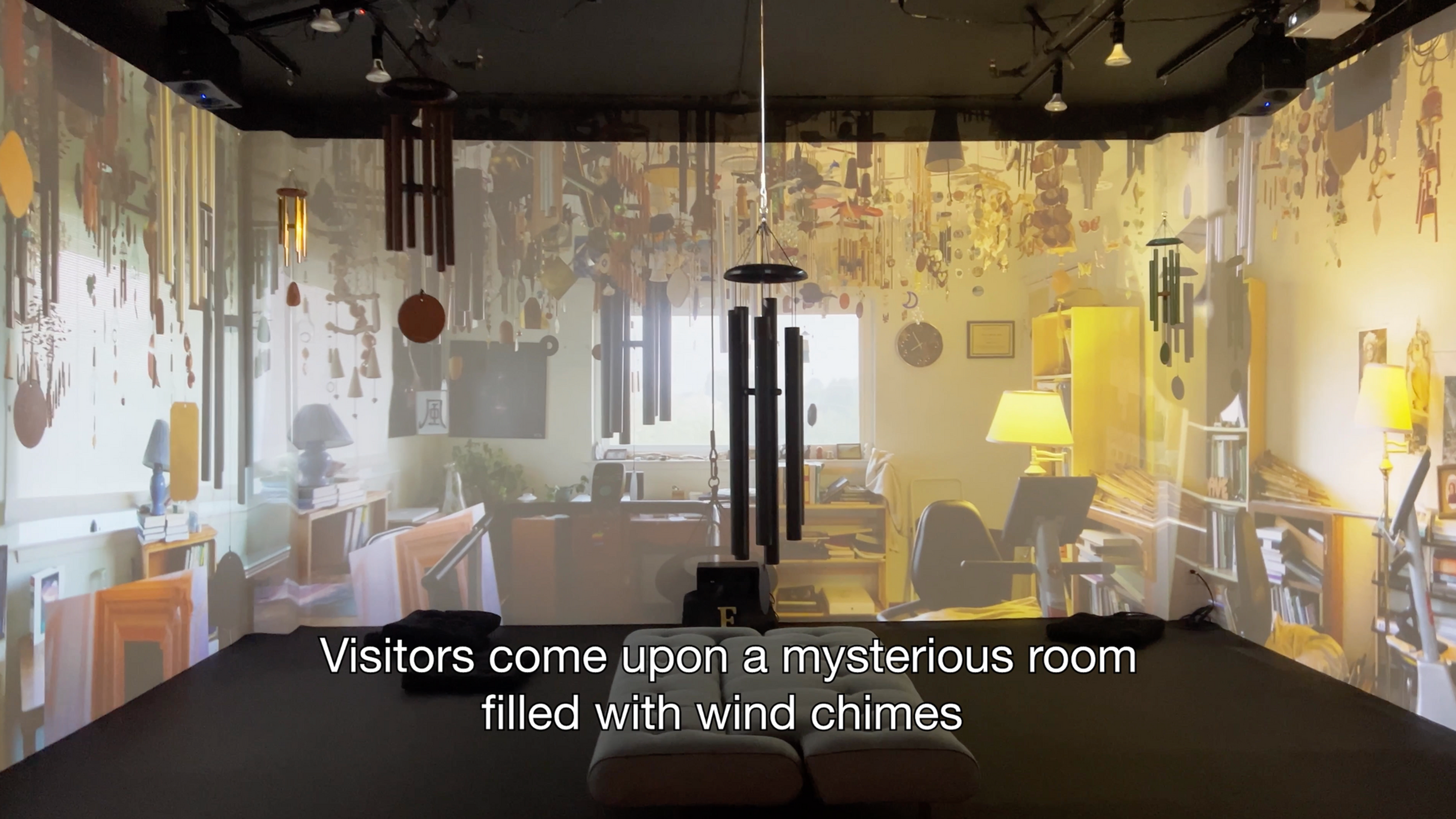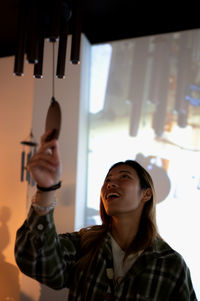top of page
THE ASYLUM
THE
ASYLUM
A Tribute to
David Cope

The Asylum is an immersive audiovisual installation that recreates the legendary workspace of composer and AI pioneer David Cope. In his Santa Cruz home, Cope filled his office with over 200 wind chimes: metal, wood, glass, shells, and scrap materials, collected over four decades. To him, they were more than decorations. He called them "algorithmic music-making devices," responding to wind and touch with endlessly shifting compositions.
Using ultra-high-resolution video projection and a soundscape built entirely from recordings of the actual chimes, this installation faithfully reconstructs Cope's original Asylum. A selection of real chimes hangs overhead, inviting visitors to interact, listen, and reflect.
Bring The Asylum to your institution and offer audiences a transportive experience that is contemplative, accessible, and unforgettable.
Contact: info@asylumexhibit.org

The Asylum POV Walkthrough
For Curators: Space & Tech Overview
-
Minimum equipment to present
-
Video: 3 short-throw 4K projectors with mounts
-
Audio: 5 speakers with multichannel audio interface
-
Chimes: 7 physical chimes with safe mounting
-
Control: Show computer with industry standard A/V playback
-
Venue: Rigging for projectors, speakers, chimes
-
-
Source media
-
Video: 6K–8K resolution (RED Raptor),16:9 (1.78:1)
-
Audio: Immersive soundscape from original chime recordings, featuring select David Cope compositions
-
-
3-wall exhibit dimensions (seen in walkthrough)
-
Length: 20.0 ft (6.10 m)
-
Width: 20.0 ft (6.10 m)
-
Height: 11.0 ft (3.35 m)
-
Area: 400 sq ft (37.2 m²)
-
-
Original Asylum room dimensions
-
Length: 16.25 ft (4.95 m)
-
Width: 12.25 ft (3.73 m)
-
Height: 8.00 ft (2.44 m)
-
Area: 199 sq ft (18.5 m²)
-
- Potential options to explore
- LED walls / emerging displays
- Expandable immersive audio (add ceiling speakers, etc)
- Increased number of physical chimes
- Self-actuated physical chimes
- Four wall enclosed experience
-
Potential interactivity
-
Touch chimes → rhythmic audio delay in immersive sound
-
Touch chimes → wave trigger of overhead chimes
-
Stationary bike: pedaling triggers configurable effects
-
-
David Cope archive companion exhibit
-
Access to manuscripts, prints, photos, and physical media. Contact for details
-
About David Cope and The Asylum
David Cope (1941–2025) was a groundbreaking figure in generative music and a key early voice in the field of artificial creativity. In the 1980s, he developed Experiments in Musical Intelligence (EMI, pronounced "emmy"), an AI system capable of composing original works in the style of great composers. EMI raised urgent questions that have only become more relevant: What defines creativity? Who authors a machine-made work? What role does intention play in art?

These ideas are explored in Jae Shim's documentary Opus Cope: An Algorithmic Opera, a film that examines Cope's work and the philosophical weight behind it. While working on the film, sound designer Mike James Gallagher became captivated by Cope’s wind chime-filled office, known as The Asylum. Gallagher saw the room not just as a personal space, but as a gateway into Cope’s process and thinking. He urged Shim that they return and document the room in full, leading to the creation of this installation.
To Cope, the chimes were a form of creative system: nonlinear, tactile, and expressive. The Asylum installation preserves that environment. It offers visitors an encounter with the sound and atmosphere that surrounded one of the most provocative and visionary minds in music and AI.
Cope's influence reaches far beyond academia. Ren Klyce, Oscar-nominated sound designer for David Fincher, credits Cope as a foundational influence in his career. Cope’s students often describe him as their most inspiring teacher. His work laid groundwork for today’s explosion of generative tools, and remains a touchstone for those exploring the edges of music, authorship, and machine intelligence.
For institutions focused on art, technology, or sound, The Asylum offers a powerful and resonant experience. It reframes the history of AI not as a recent revolution, but as a long-standing creative pursuit.
Bring this space to your audience and let them step inside a mind that helped shape the future.
Contact: info@asylumexhibit.org
About the Artists
bottom of page















